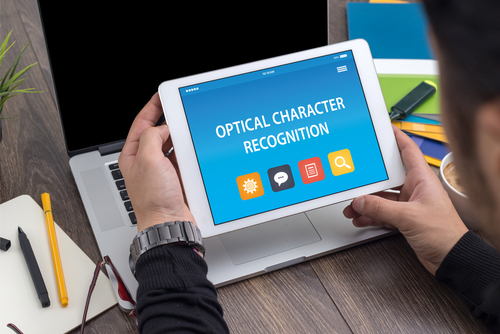All the businesses in the modern world have to deal with tons of data every day. Data collection, data extraction, data manipulation and converting it into Machine Readable Zone is a difficult task using traditional manual methods. To comply with the demands of customers, businesses have to adopt a solution that can process data more fastly and accurately. Online Optical Character Recognition (OCR) Technology is a solution for the best data processing in little time.
What is Optical Character Recognition?
Optical Character Recognition OCR Technology is used to convert handwritten or printed documents into digital form. It can analyze documents automatically and can transform them into an editable form so that the computer can process it easily. It is commonly used as a data extraction tool.
But it can do more than just data extraction powered with high-level Artificial Intelligence (AI) and Natural Language Processing (NLP) technology, OCR can process and examine the content of the documents completely and can distinguish irregularities in it. OCR is trained and tested on thousands of documents to enhance its performance. Forged, tempered or photoshopped documents are caught by optical character recognition software.
OCR can extract information from just a picture of the document or a scanned copy and also use it for pattern recognition or use the extracted information for cognitive computing.
Working of Optical Character Recognition
The working mechanism of AI-powered optical character recognition is based on three steps fully eliminating the manual intrusion. The whole process just takes seconds to extract data from images.
-
Pre-Processing
The primary objective of pre-processing is to make it easy for OCR to distinguish between different styles and fonts. It is done to enhance the accuracy of character recognition. The techniques used for processing are listed below.
Binarization
In simple words, binarization means converting coloured images into only black and white images. It becomes easy to extract information on grey-scale pictures. It transforms the background into the white surface and the words are given the colour black.
De-Skew
The images may be distorted or not be properly aligned. De-skew accurately aligns the image vertically and horizontally for better results.
Noise Removal
The process of removal of dots and coloured patches that have more intensity than the rest of the picture is known as noise removal. This is done on both coloured and grey-scale pictures.
Script Recognition
In the case of multilingual documents, data extraction is difficult. To improve the results, script recognition identifies and classifies the scripts, fonts, styles, and languages of the document.
Skeletonization
This is optional for printed documents because printed documents have a uniform size of characters but in handwritten documents, the style and stroke of character may differ. Skeletonization is done to make the size and stroke of characters uniform. This process is also called thinning.
2. Characteristic Recognition
At this stage of data processing patterns and features are identified. In the case of a typewritten document, it is easy to recognize the pattern so the whole character is picked for extraction. But in the case of a handwritten document, a whole character instead features are extracted like line, intersection, and loops. The focus on smaller details and script of the document intensifies in handwritten documents.
3. Final Data Extraction
After pre-processing and character recognition, the data is extracted from hard form to soft form. The data is now in digital form and can be used to form populating or data processing. At this stage, all the risks of data falsification are eliminated.
The OCR can also correct grammar and possible word mistakes. Due to enhanced AI, OCR has the power of editing spelling mistakes on printed or handwritten documents.
Advantages of Using Optical Character Recognition OCR Solution for a Business
- OCR software does not require any additional hardware for installation. It can be installed on all operating systems including android, IOS, and windows
- Simple mobile camera or webcam can be used for capturing images
- Saves time, cost and manual resources on data extraction
- Results are more accurate and can be used to train the AI model
- Giver better customer compliance
- Fastens the business processes
















